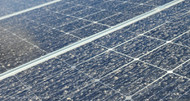THE REAL IMPACT OF DUST, SNOW, AND DEBRIS ON SOLAR PANEL OUTPUT OFF-GRID
24th Sep 2025
Dust, snow, and debris are often underestimated in their effect on off-grid solar panel performance, yet the impact can be more substantial than many realize. Even a light layer of dust can block enough sunlight to reduce energy production by 5–10%, and heavy buildup from events such as sandstorms, wildfires, or construction activity can push losses beyond 20%. Snow coverage can be even more disruptive, completely halting output until it melts or is removed. Fallen leaves, pollen, or bird droppings may shade only part of a panel, but due to the way panels are wired, this can disproportionately reduce the entire array’s output. Over time, these losses add up, forcing the system to rely more heavily on batteries or backup generators, which can strain off-grid energy planning.

Cleaning is the most direct way to restore output, but it requires forethought, especially for remote locations. In dry, dusty areas, a soft brush or gentle rinse with low-mineral water every couple of weeks can prevent performance decline. In snowy climates, using a non-abrasive roof rake or scheduling snow removal shortly after storms can make a major difference in uptime. Where manual cleaning is difficult, self-cleaning coatings or tilting mounts that allow rain and gravity to help clear panels can reduce the frequency of maintenance. Seasonal cleaning schedules, with more frequent cleanings in spring pollen season or during fall leaf drop, help ensure that buildup never reaches output-threatening levels.
System design can also reduce the potential for dust, snow, and debris to accumulate in the first place. Panels mounted at steeper tilt angles naturally shed snow and rain more effectively, while placing arrays away from overhanging trees or vents helps limit leaf litter and airborne grime. Choosing high-quality panel glass with hydrophobic or anti-reflective coatings can help resist soiling, and ensuring that the layout allows for safe, easy access makes maintenance less of a challenge. In off-grid systems, where every watt counts, designing for easy upkeep from the start is just as important as sizing for energy needs.
Ongoing monitoring is essential to catch performance drops early. A solar monitoring system that tracks daily output and compares it against expected production for the season can quickly flag potential problems. Reviewing data at both the system and string level can pinpoint whether a single panel is underperforming due to debris, or if the entire array is affected. This allows owners to take timely action before losses escalate and storage reserves are depleted.

For off-grid solar setups, staying vigilant about cleanliness, integrating smart design features, and actively monitoring performance ensures that the system continues to operate at peak efficiency. By addressing dust, snow, and debris proactively, users can protect their investment and maintain reliable, consistent energy year-round.
